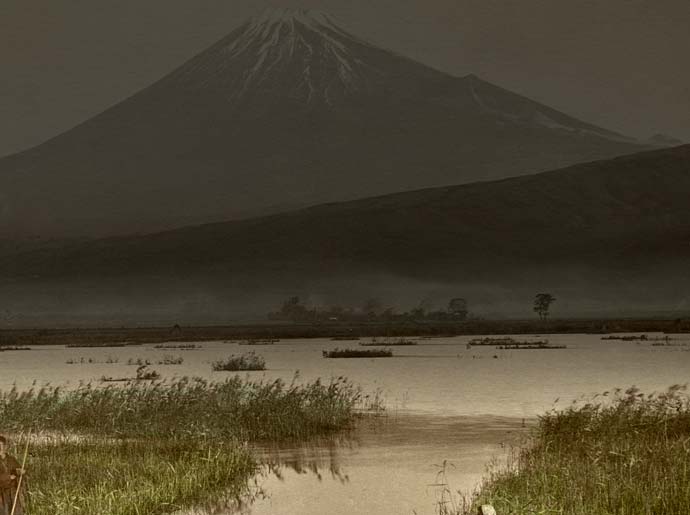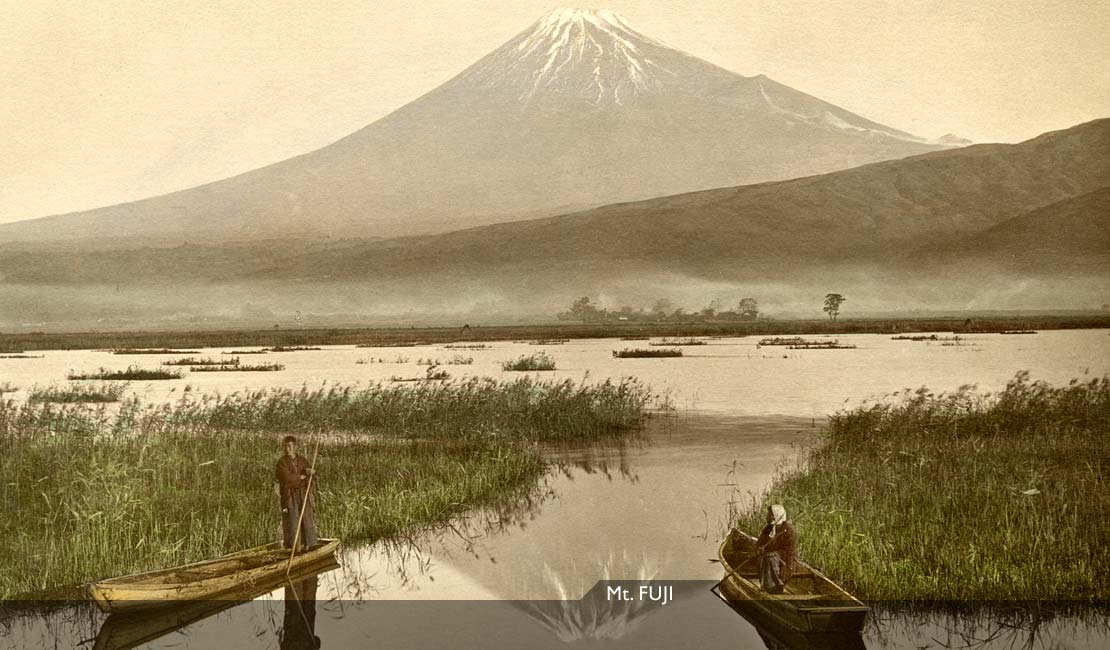Hakone, Miyanoshita, Mt. Fuji, along the Tokaido
“In the far distance, over a hazy line of forest, rose the glittering crest of the great mountain of Japan. We had tried for days to catch sight of it from the bluff and heights in the neighbourhood of Yokohama, but Fuji was as coquettish as an Eastern beauty, and had hitherto concealed her face from us behind a diaphanous veil of clouds. Her form we knew well, for was it not carved or engraved, painted or inlaid, on innumerable works of art?”

Yokohama
“Rewarded for an early appearance on deck this morning by the first glimpse of Fuji-san—the Sacred Mountain of Japan. Its summit was only unveiled for a few moments, and has not appeared again today. It is a perfect cone, 12,500 feet high, and must have been 100 miles distant when seen this morning.”
(
More)
Gilbert Watson, Three Rolling Stones in Japan, (London, 1904) p. 285
Arthur H. Crow, Highways and Byeways in Japan, (London, 1883) p. 4
Hakone, Miyanoshita, Mt. Fuji
“No mountain in the world can equal Fuji-yama, either in appearance, or in the view from its summit. In Switzerland or the Andea no mountain is without its rival, and therefore cannot have an uninterrupted view, whereas Fuji stands alone in solitary grandeur, 12,500 feet high, without a rival in the realm which lies like a map at its feet. No one can help revering the majestic cone, and it is little wonder that such lovers of the beautiful as the Japanese willingly worship it, or that the Shinto priests have ever wielded it as a powerful scepter for the advance of their faith.”

“‘The summer Fuji,’ its dark-brown slopes only touched with a fine line or tow of snow, is less beautiful than ‘the winter Fuji,’ with its glistening crown; and our Mount Rainier, whose snows are eternal, whose wooded slopes shadow the dark-green waters of Puget Sound, is lovelier still. But though we have the more glorious mountain, the snow, the rocks, the forest, we have not the people instinct with love of poetry and nature; we have not the race-refinement, and the race-traditions, that would make of it another Fuji, invested with the light of dream and legend, dear and near to every heart.”
Arthur H. Crow, Highways and Byeways in Japan, (London, 1883) p. 265
Eliza Ruhamah Scidmore, Jinrikisha Days in Japan, (New York, 1891) p. 189



